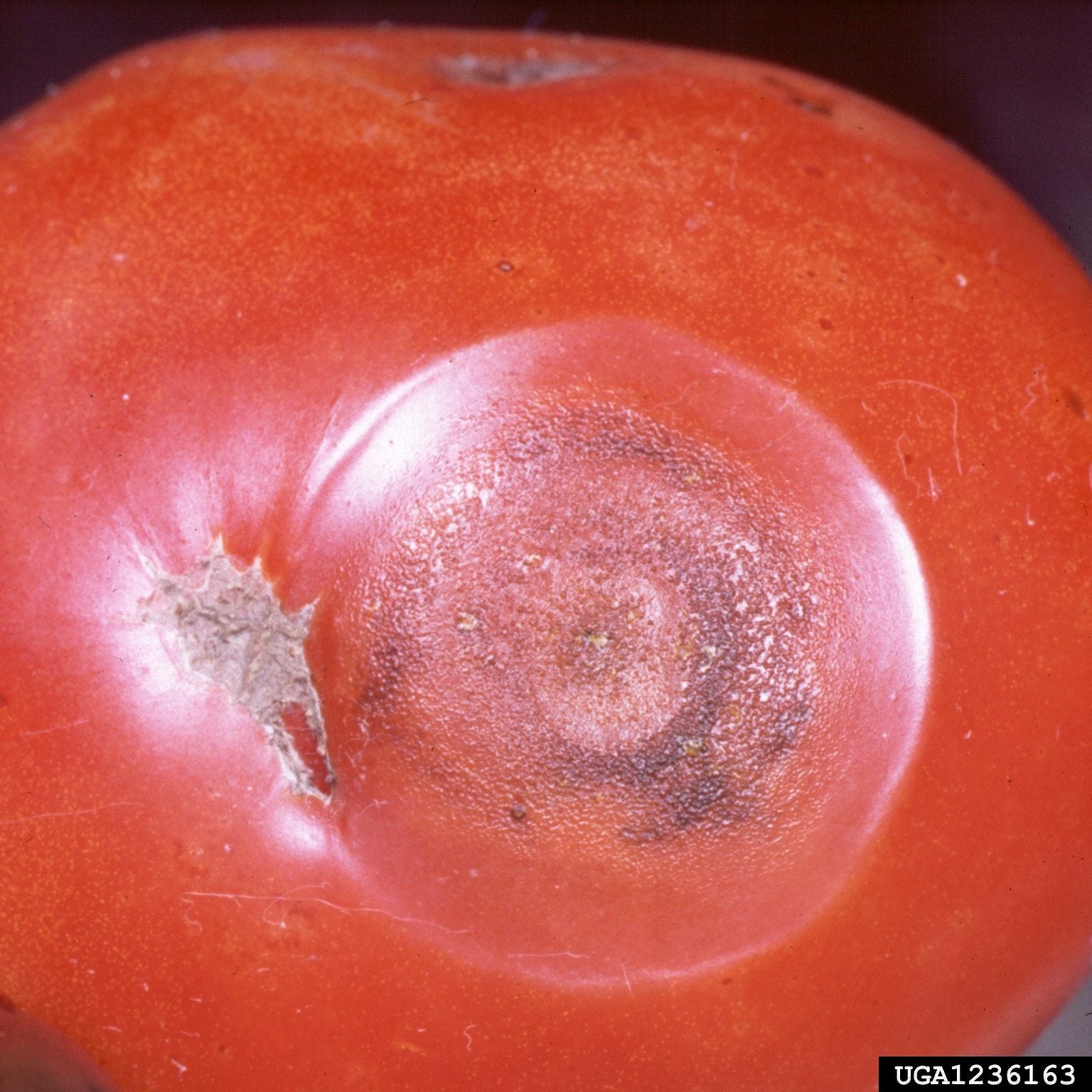Anthracnose In Tomato Plants: Identification, Treatment & Prevention
Anthracnose in tomatoes can be a real heartbreaker but you can prevent those nasty dark lesions on your beautiful fruits. Be sure to learn in advance how to create the right conditions for your plants.

Amy Draiss
Anthracnose In Tomato Plants: How To ID, Treat & Prevent
Anthracnose in tomato plants is a serious but preventable disease. Caused by fungal spores that primarily survive on crop debris and weeds, anthracnose on tomatoes causes rot on ripe or overripe fruit.
Except for lesions on the fruit itself, infected anthracnose tomato plants generally continue to look healthy while the disease continues to spread to healthy tomatoes.
So what can you do about anthracnose tomatoes? Keep reading to learn how to combat tomato anthracnose.
What Is Tomato Anthracnose?
Anthracnose is caused by a number of species of Colletotrichum, a fungus that is common in areas where moist conditions facilitate its spread. The fungus overwinters on plant debris or can be seed-borne.
It is spread by high humidity and frequent rainfall, as well as watering from above with overhead irrigation methods. If left unmanaged, its spread can cause significant losses in yields. It also affects other members of the Solanacea family such as eggplant, peppers, and potatoes.
Symptoms of Anthracnose on Tomatoes
Symptoms of anthracnose on tomatoes appear as small, water-soaked spots on ripe fruit. The spots grow and darken, sometimes with the presence of salmon-colored spores visible on the surface of the lesion.
As the disease progresses, the lesions join resulting in fruit decay. On occasion, the disease also afflicts the older leaves of the plant resulting in small, dark spots encompassed by a yellowish halo.
Sign up for the Gardening Know How newsletter today and receive a free copy of our e-book "How to Grow Delicious Tomatoes".
How to Prevent Anthracnose in Tomato Plants
- Because the disease overwinters in plant debris and weeds, one of the first lines of defense is to remove all debris and weeds prior to planting your tomato plants.
- Also since the pathogen can pass from infected seeds, do not save seeds from diseased fruit. Instead, purchase disease-resistant varieties, especially in areas where the disease has previously made its presence known.
- Avoid using overhead watering and instead switch to drip irrigation, a soaker hose or hand water at the base of the plant only. Avoid getting water on the leaves or fruit of the tomato which can easily spread the spores.
- Allow plenty of space between plants to facilitate airflow and allow plants to dry quickly. Staking and trellising plants can also help to prevent the transmission of the disease.
- Rotate any Solanaceae crops, allowing 3-4 years between another nightshade planting. Keep your plants healthy! Tomato plants that have leaf diseases and are partially defoliated are particularly prone to this infection.
- Fungal sprays conducted on a regular basis from fruit set to harvest can also provide some measure of control over the disease.
- Harvest ripe fruit as soon as possible. That said, even fruit with no signs of the disease may still be afflicted post-harvest.
How to Get Rid of Anthracnose on Tomatoes
Once the disease has become established, you can try to slow down its spread by using some of the management techniques above, but it’s usually a losing battle.
Dedicated fungicide applications may also slow the spread of the disease but will not halt its progression entirely.
You can eat tomatoes with anthracnose lesions; cut out the lesions first. However, if most of the fruit is covered in lesions it is best to dispose of it. Plants that are severely affected should also be removed and disposed of properly. Do not put them in the compost pile since it may not get hot enough to destroy the pathogen thus surviving to infect another crop.
FREQUENTLY ASKED QUESTIONS
Is it safe to eat tomatoes with anthracnose?
Yes, you can eat a tomato with anthracnose. If the lesions are not too bad, simply cut them out and dispose of them. If the tomato is riddled with lesions, it’s likely starting to rot and the entirety should be disposed of.
Does anthracnose stay in soil?
Yes, anthracnose can overwinter in the soil. It survives as tiny, black microsclerotia in the soil and as acervuli in plant debris between growing seasons. It is caused by Colletotrichum coccodes that has a host range of 68 species of crops and weeds it survives on.

The only child of a horticulturist and an English teacher, Liz Baessler was destined to become a gardening editor. She has been with Gardening Know how since 2015, and a Senior Editor since 2020. She holds a BA in English from Brandeis University and an MA in English from the University of Geneva, Switzerland. After years of gardening in containers and community garden plots, she finally has a backyard of her own, which she is systematically filling with vegetables and flowers.
- Amy DraissDigital Community Manager

